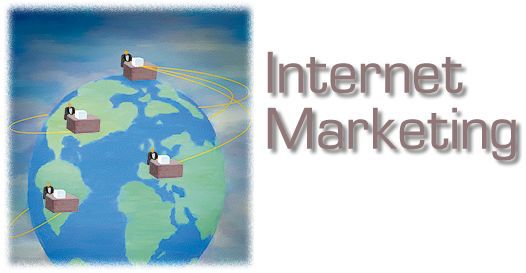Optimal Website Design
Optimal website design is the art of logical navigation.
It will offer consistency while providing useful, quality information that is attractive to the eye and easy to understand. A well designed site will lead your viewers to the starting point and direct them through your site without confusing them.
While there are many ways to design a website there are a few basic design principles that will help you create a site that is user friendly and attractive.
1. Use lots of white space.
Don't feel that because you have a whole screen you need to fill it up with 'stuff'. Your page should follow a clean outline. Include your site name at the very top. Below that, list the subject of your page followed by information on your topic. Leave adequate space between each section.
Don't cram a lot of pictures and ads on your site. If you have an ad, keep it off to the side or subtly intersperse it between your text. The idea is not to overwhelm your reader with a lot of advertisements.
It's best to keep your text on a white background. If you do choose a colored background be careful that your text doesn't blend into the background making it difficult to read.
2. Don't use animation and flashing objects.
As advertisers we feel the need to get our viewers attention. This is important but we need to do it gracefully. Flashing objects and scrolling images distract your visitors and take away from the content. If your product is better demonstrated with animation, music or some other multi-media, allow your viewer to select the option. Don't force it on them.
3. Include an 'about' link.
Allow your viewers to find out about who you are and what you are about. Include a biography and some background on why you are in the business you're in or why you created your website. By helping them to get to know you, they will find it easier to develop a trust. If they can like you and trust you, they will feel a lot better about doing business with you.
Always include your business address, phone number and email address. This also lets viewers know that you welcome contact and are serious about your business.
4. Include a 'Privacy' Link
Reassure your visitors that you follow privacy guidelines by including a 'Privacy' page. This is particularly important if you are collecting names and email addresses. Visitors want to know that you will not sell or give away their information.
In these days of rampant spam, your privacy policy needs to be prominently displayed. Many viewers and business partners won't do business with you unless you have it.
5. Always keep your links in blue.
Internet surfers have long been accustomed to seeing links in blue. It's simply an expectation that viewers have. There's certainly no law that says your links must be blue, but people prefer consistency, therefore it's good practice to keep your links consistent and recognizable. If they're not, you may lose out on clicks.
6. Keep navigation consistent
The navigation scheme you create on your index page should be done the same way throughout your site. Don't force your viewers to relearn each page of your site. Keep your navigation bars, colors and fonts consistent for each page.
7. Use Understandable buttons and links.
Title your links appropriately. Don't use cute or misleading names. For example, if you have a link to 'cameras' don't label the link 'hotshots', label it 'Cameras'. Your viewers don't want to waste time figuring out what things are. Be clear with your text or you could risk losing your visitor.
8. Focus on the 'YOU', not the 'ME'.
Make it obviously clear to your readers that you are in business for them. Encourage feedback, provide useful information and keep advertisements to a minimum. Your objective should be focused on what you can do for your reader? Convince them that your main interest is how you can deliver what it is they're looking for?
9. Make sure your page loads fast.
If viewers have to wait for a page to load they will click elsewhere. If a page doesn't load in 8 seconds you could lose 1/3 of your visitors. Here's a great free tool to help you check your website's load time:
http://www.1-hit.com/all-in-one/tool.loading-time-checker.htm
10. Use a site map.
A site map will give visitors a "guide" on viewing your site, especially with larger sites. it's a road map for your visitors to follow. Sitemaps are also popular with search engines and are often recommended to help ensure indexing





 3:09 PM
3:09 PM
 Sandeep
Sandeep

.jpg)
 Posted in:
Posted in: 




.jpg)

